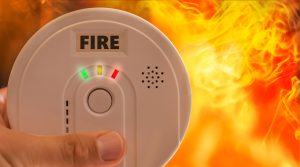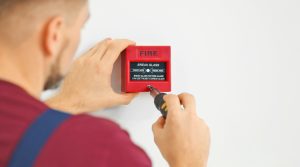
Common Fire Alarm Issues and How to Fix Them: A Comprehensive Guide
Introduction
Fire alarms are essential for safety in both residential and commercial spaces. They provide an early warning of potential fires, allowing people to evacuate and alert emergency services. However, like any piece of technology, fire alarms can encounter issues that may hinder their performance. This article covers common fire alarm problems and their solutions, providing both preventive and corrective measures to ensure your system operates effectively when needed.
1. False Alarms
One of the most common issues with fire alarms is false alarms. These can be triggered by various factors such as smoke from cooking, dust, steam, or insects. False alarms are not only irritating but can also lead to unnecessary evacuations, making it crucial to address the underlying causes.
How to Fix False Alarms:
- Clean the Smoke Detector: Dust and debris can cause false readings. Regularly clean your smoke detectors with a vacuum or a soft cloth to prevent buildup.
- Avoid Steam and Smoke: Ensure the alarm is installed away from kitchens or bathrooms, where steam from cooking or showering could trigger a false alarm.
- Replace Old Batteries: Low battery levels can sometimes cause the alarm to malfunction and emit false signals. Change the batteries at least once a year or as recommended by the manufacturer.
- Check for Insects: Insects are known to nest in smoke alarms, leading to malfunction. Clean the detectors to remove any insects.
2. Low Battery Warning
Fire alarms typically emit a chirping sound when the battery is low. This warning is essential to ensure that the alarm remains functional, but it can be frustrating if it occurs at night or when you are unable to replace the battery immediately.
How to Fix Low Battery Warnings:
- Replace the Batteries: Ensure you use the recommended battery type and replace them annually to prevent unexpected warnings.
- Check the Battery Terminals: Ensure the battery terminals are clean and free of corrosion. Corroded terminals can cause poor battery contact, leading to low battery alerts.
3. Smoke Detector is Not Responding
Sometimes, smoke detectors fail to respond to smoke or fire, which can be dangerous during an emergency. The reasons for this issue could range from a malfunctioning unit to improper installation.
How to Fix a Non-Responsive Smoke Detector:
- Test the Alarm: Most smoke detectors come with a test button. Press the test button to ensure the alarm sounds properly. If it does not, the alarm may be faulty and need replacement.
- Check for Obstructions: Ensure there are no objects blocking the sensor’s ability to detect smoke, such as large furniture or curtains.
- Replace the Detector: If the detector is still non-responsive, it may be time to replace it. Most smoke detectors should be replaced every 10 years, or as recommended by the manufacturer.
4. Chirping or Beeping Without a Clear Reason
A fire alarm that continues to chirp or beep without an apparent reason can be both confusing and annoying. This issue often arises from electrical faults, sensor problems, or faulty wiring in hardwired smoke alarms.
How to Fix Continuous Chirping:
- Check for Battery Issues: If your alarm is battery-operated, check the battery. Replace it if necessary.
- Inspect the Wiring: For hardwired smoke detectors, check the wiring to ensure it is properly connected. Faulty or damaged wiring can cause continuous beeping.
- Reset the Alarm: Sometimes, simply resetting the alarm can resolve the issue. Refer to your alarm’s manual for specific reset instructions.
Some fire alarms are equipped with carbon monoxide (CO) detection. If the CO sensor malfunctions, it may fail to alert you of dangerous carbon monoxide levels, which can be deadly.
How to Fix CO Detection Problems:
- Test the CO Sensor: If your fire alarm has a built-in carbon monoxide detector, test it regularly to ensure it is functioning properly. If you hear a series of three short beeps, it indicates high carbon monoxide levels.
- Replace the CO Sensor: CO sensors have a limited lifespan, typically around 5-7 years. If it fails to detect carbon monoxide, it may need replacement.
- Check Ventilation: Ensure that all combustion appliances (e.g., gas heaters or stoves) are properly ventilated. Poor ventilation can increase CO buildup.
6. Wiring Issues in Hardwired Systems
In hardwired smoke alarms, wiring issues can prevent the alarm from functioning correctly. Problems such as loose wires, incorrect connections, or power surges can affect the system’s performance.
How to Fix Wiring Issues:
- Inspect Connections: Check all wires to ensure they are tightly connected. Loose connections can cause malfunctioning alarms.
- Consult an Electrician: If you are not comfortable with electrical work, it’s advisable to contact a licensed electrician to inspect and repair the wiring.
- Install Surge Protectors: Power surges can damage hardwired smoke detectors. Installing surge protectors can help prevent this issue.
7. Interference From Other Electrical Devices
Sometimes, electrical devices such as fans, air conditioning units, or even nearby light fixtures can interfere with fire alarms, triggering false readings.
How to Fix Interference Issues:
- Relocate the Alarm: Ensure that your smoke detector is installed away from electrical devices that may cause interference.
- Use Shielded Wiring: In areas with significant electrical interference, shielded wiring can help reduce the effects of electromagnetic fields on your fire alarm system.
8. Fire Alarm Not Being Tested Regularly
Many homeowners and business owners overlook the importance of regularly testing fire alarms. Over time, alarms may degrade or develop issues that are only noticed during an emergency if they are not regularly checked.
How to Fix This:
- Test Monthly: Press the test button on each smoke alarm to ensure they are working properly.
- Professional Inspections: Consider scheduling regular professional inspections, especially for complex fire alarm systems in commercial buildings.
Conclusion
Fire alarms are critical components of any safety system, and addressing common issues promptly can prevent dangerous situations. Whether it’s false alarms, low battery warnings, or wiring issues, regular maintenance and timely fixes are essential to keep your system in top condition. By following these tips and troubleshooting advice, you can ensure that your fire alarm system functions optimally when it matters most. Regular testing and proper maintenance will provide peace of mind and enhance safety for everyone in your home or business.






